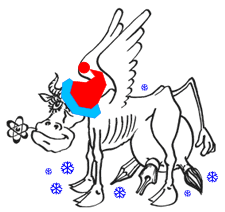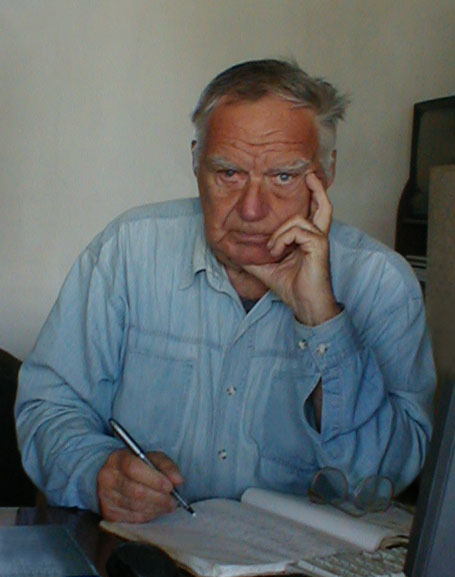Table of Contents
Read Book from " Pdf - OnLine " ( Yumpu, 2.5 Mbyte )
( The Whole Book )
Front Matter
I Preface - On the Disservice of Theoretical Physics
1 Is It Possible for a Physical Theory to be Harmful ?
1.1 Experimentalists and Theoreticians
1.2 On the Specifics of the Experimental and the Theoretical Working
1.3 The Central Principe of Science
1.4 The Characteristic Properties of Pseudo-Theories of XX Century
2 About Pseudo-Theories of XX Century
2.1 The Theory of the Internal Structure of Hot Stars
2.2 The Theory of Terrestrial Magnetic Field
2.3 The Physics of Metal - The Thermo-Magnetic Effect
2.4 Elementary Particle Physics
2.5 Superconductivity and Superfluidity
II The Development of the Science of Superconductivity and Superfluidity
3 Introduction
3.1 Superconductivity and Public
3.2 Discovery of Superconductivity
4 Basic Milestones in the Study of Superconductivity
4.1 The London Theory
4.2 The Ginsburg-Landau Theory
4.3 Experimental Data That Are Important for Creation of the Theory of Superconductivity
4.3.1 Features of the Phase Transition
4.3.2 The Energy Gap and Specific Heat of a Superconductor
4.3.3 Magnetic Flux Quantization in Superconductors
4.3.4 The Isotope Effect
4.4 BCS
4.5 The New Era - HTSC
5 Superfluidity
III Superconductivity, Superfluidity and Zero-Point Oscillations
6 Superconductivity as a Consequence of Ordering of Zero-Point Oscillations in Electron Gas
6.1 Superconductivity as a Consequence of Ordering of Zero-Point Oscillations
6.2 The Electron Pairing
6.3 The Interaction of Zero-Point Oscillations
6.4 The Zero-Point Oscillations Amplitude
6.5 The Condensation Temperature
7 The Condensate of Zero-Point Oscillations and Type-I Superconductors
7.1 The Critical Temperature of Type-I Superconductors
7.2 The Relation of Critical Parameters of Type-I Superconductors
7.3 The Critical Magnetic Field of Superconductors
7.4 The Density of Superconducting Carriers
7.5 The Sound Velocity of the Zero-Point Oscillations Condensate
7.6 The Relationship _0=kTc
8 Another Superconductors
8.1 About Type-II Superconductors
8.2 Alloys and High-Temperature Superconductors
9 About the London Penetration Depth
9.1 The Magnetic Energy of a Moving Electron
9.2 The Magnetic Energy and the London Penetration Depth
10 ThreeWords to Experimenters
10.1 Why Creation of Room-Temperature Superconductors are Hardly Probably
10.2 Magnetic Electron Pairing
10.3 The Effect of Isotopic Substitution on the Condensation of Zero-Point Oscillations
11 Superfluidity as a Subsequence of Ordering of Zero-Point Oscillations
11.1 Zero-Point Oscillations of the Atoms and Superfluidity
11.2 The Dispersion Effect in Interaction of Atoms in the Ground State
11.3 The Estimation of Main Characteristic Parameters of Superfluid Helium
11.3.1 The Main Characteristic Parameters of the Zero-Point Oscillations of Atoms in Superfluid Helium-4
11.3.2 The Estimation of Characteristic Properties of He-3
III Superconductivity, Superfluidity and Zero-Point Oscillations
IV Conclusion
12 Consequences
12.1 Super-Phenomena
12.2 A Little More About Pseudo-Theories
Back Matter
|
|
Author(s)
Boris V. Vasiliev was born in 1937 in Ekaterinburg ( Russia ).
His father - Vasilyi Volkov, scientist - geophysics - was killed during the Stalinist purges of 1937.
His mother - Nina A. Vasilieva raised her three children and gave them the higher education by herself after the death of her husband .
Boris Vasiliev graduated from the Physical-Techical Department of the Ural Polytechnic Institute and was postgraduate of Kurchatov Institute
( supervisor - Academician Isaak K. Kikoine ). PhD ( 1968 ), Dr. Sci. Sciences ( 1984 ). Author of over 100 scientific papers and several books.
He started to work as a research engineer and came to the Director of the Research Institute in Dubna for more 35 years.
His main achievements
* The description of the super-phenomena - superconductivity and superfluidity - as a consequence of ordering zero-point oscillations.
* The theory of hot stars, built taking into account the gravity-induced electric polarization intrastellar plasma.
* The theory of Earth's magnetic field.
* The electromagnetic model of neutron and quantum mechanical nature of nuclear forthes.
* Electromagnetic nature of neutrinos.
* Discovery and study of thermo-magnetic effect in metals.
* The theory rf-SQUID.
* The experimental determination of the upper limit of the existence of an electric dipole moment of the electron,
in violation of CP and T invariance (the measurement results entered in the directory on the properties of elementary particles).
Description
Currently there is a common belief that the explanation of superconductivity phenomenon lies in understanding
the mechanism of the formation of electron pairs. Paired electrons, however, cannot form a superconducting condensate spontaneously.
These paired electrons perform disorderly zero-point oscillations and there is no force of attraction in their ensemble.
In order to create a unified ensemble of particles, the pairs must order their zero-point fluctuations so that an attraction between the particles appears.
As a result of this ordering of zero-point oscillations in the electron gas, superconductivity arises.
This model of condensation of zero-point oscillations creates the possibility of being able to obtain estimates for the critical parameters of elementary superconductors,
which are in satisfactory agreement with the measured data. On the another hand, the phenomenon of superfluidity in He-4 and He-3 can be similarly explained,
due to the ordering of zero-point fluctuations. It is therefore established that both related phenomena are based on the same physical mechanism.
|

















